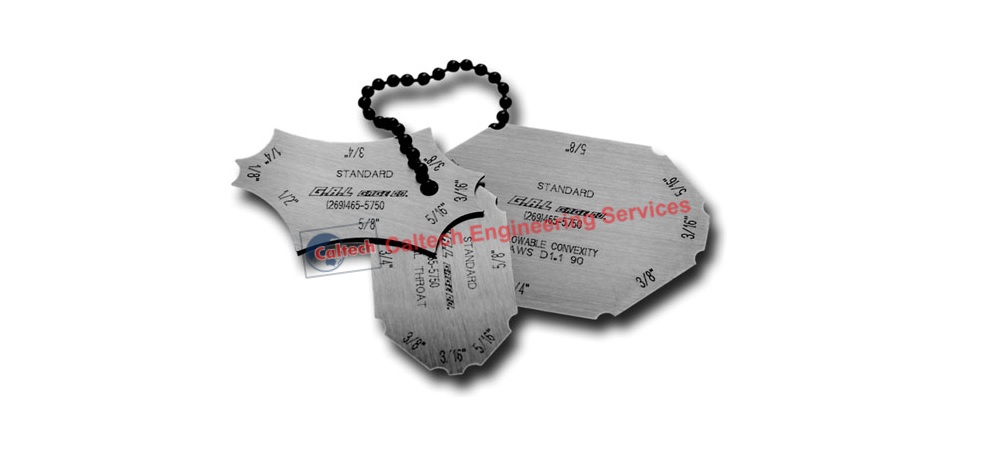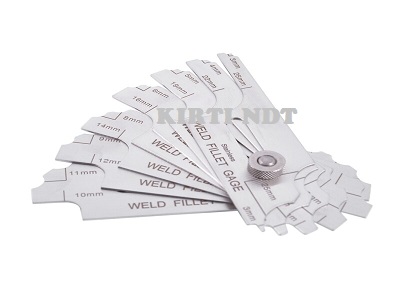The Ultimate Guide to Fillet Weld Quality Control: Making Sure Stamina and Resilience in Your Welded Joints
In the realm of welding, making certain the strength and resilience of fillet welds is vital for the honesty of bonded joints. As we embark on this exploration of fillet weld high quality control, we will certainly reveal crucial factors that influence weld stamina, dig right into efficient examination methods, and talk about methods for stopping usual weld issues.
Relevance of Fillet Weld Quality Control
Ensuring proper fillet weld quality control is vital in ensuring the structural integrity and longevity of welded components in various industries. Fillet welds are commonly made use of in architectural steelwork, bridges, stress vessels, pipes, and other vital facilities where the strength of the weld is essential to overall safety and efficiency. Quality assurance actions such as aesthetic inspections, non-destructive testing, and adherence to welding treatments help determine possible problems like absence of combination, insufficient infiltration, undercutting, or excessive support.
Trick Aspects Affecting Weld Stamina
Accomplishing optimum weld stamina requires cautious consideration of different key variables that influence the honesty and toughness of the welded joint. The initial important factor is appropriate joint preparation, which includes cleansing the base metals to get rid of any pollutants that could compromise the weld. Additionally, the fit-up of the joint is necessary to guarantee correct penetration and combination of the filler product.
The selection of the proper welding strategy and criteria also plays a considerable duty in identifying weld stamina. Variables such as heat input, travel rate, and electrode angle can influence the quality of the weld. Maintaining the appropriate interpass temperature throughout multi-pass welding is essential to prevent breaking and make sure a solid bond in between the layers.
In addition, the selection of filler material and its compatibility with the base steels is critical for achieving high weld strength. Using filler material with the suitable mechanical buildings can enhance the overall integrity of the weld. Lastly, post-weld heat treatment and correct evaluation methods are crucial action in guaranteeing the stamina and toughness of the bonded joint.
Inspection Approaches for Weld Stability

One more vital examination method is liquid penetrant testing, where a liquid dye is related to the weld surface area - Gauge Fillet Weld. The color seeps right into any kind of surface-breaking issues, making them noticeable under UV light. This approach is effective for spotting defects that may not be visible to the naked eye


Ultrasonic testing is additionally widely made use of for examining weld honesty. High-frequency acoustic wave are routed into the weld, and any kind of disruptions in the audio wave pattern indicate possible problems like splits or lack of combination.
These inspection techniques play an essential function in making certain the quality and dependability of welds, inevitably adding to the general toughness and sturdiness of bonded joints in commercial settings.
Stopping Usual Weld Problems
In order to preserve the architectural integrity of welded joints in commercial applications, it is critical to execute precautionary actions to address typical weld flaws. One usual defect is lack of combination, where the filler product falls short to bond properly with the base metals, causing weak places in the weld. This can be protected against by ensuring proper warm control and utilizing the right welding strategy.
An additional constant issue is porosity, brought on by gas entrapment in the weld metal during the welding process. To stop this, it is important to clean the base metals completely, utilize dry electrodes, and maintain a suitable welding setting with proper ventilation.
Furthermore, fractures in welds can jeopardize the joint's stamina. To avoid this defect, it is essential to control the cooling price after welding, make use of preheating when necessary, and pick ideal welding criteria.
Enhancing Bonded Longevity With Correct Methods
One critical technique to enhance weld toughness is to guarantee correct weld bead positioning. By positioning the weld grain properly within the joint, the weld's stamina and resistance to exhaustion can be considerably boosted.
Additionally, using suitable pre-weld and post-weld warmth treatments can assist reduce residual stress and anxieties and my review here enhance the weld's sturdiness, making it more immune to fracturing and failure over time. An additional technique to enhance weld resilience is to use top notch welding consumables and base materials. Selecting the ideal filler steel and guaranteeing the tidiness of the base steels can prevent inclusions and various other issues that try these out could endanger the weld's resilience. By carrying out these correct techniques, welders can guarantee that their welded joints display exceptional strength and sturdiness, satisfying the finest criteria.
Final Thought
Finally, preserving top quality control standards for fillet welds is vital for making certain the toughness and longevity of bonded joints. By comprehending the crucial aspects influencing weld toughness, using examination methods for weld honesty, protecting against typical weld issues, and using correct methods, welders can enhance the total toughness of their welds. It is necessary to focus on quality assurance actions to create dependable and durable bonded joints.
In the realm of welding, guaranteeing the stamina and resilience of fillet welds is paramount for the integrity of bonded joints. As we embark on this expedition of fillet weld top quality control, we will reveal discover here vital factors that affect weld strength, dig into effective inspection techniques, and discuss methods for preventing typical weld defects.Achieving ideal weld toughness requires mindful factor to consider of various crucial factors that influence the stability and sturdiness of the welded joint (Gauge Fillet Weld).In verdict, preserving high top quality control standards for fillet welds is important for making sure the strength and durability of welded joints. By recognizing the essential variables affecting weld stamina, using examination methods for weld integrity, stopping common weld flaws, and employing proper methods, welders can improve the general longevity of their welds